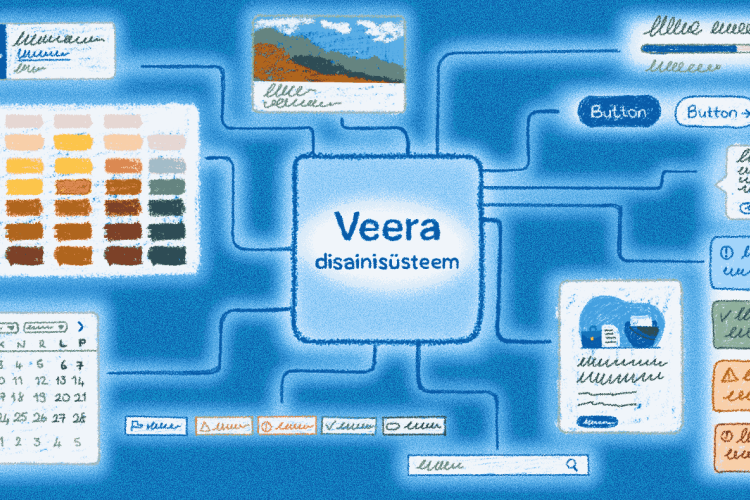Welcome to the API Economy
API no longer belongs solely to the realm of the developers. In recent years, APIs have become incredibly easier to use, which greatly expands the number of opportunities connected to them. For this reason, even those not closely associated with the IT sphere should be more knowledgeable on the subject.
From Silicon Valley to everyone’s business
Just a few years ago, APIs were made only for and by developers. Today, their direct target group and installers include distributors, sales professionals, administrators or customer support managers. In the past, API could only be installed using an integrated development environment (IDE); nowadays they can often be connected to your app using plugins, widgets, conversational AI or drag-and-drop user interfaces available to the platform. In just a few years, these opportunities have already drastically changed the way we use APIs.
When we push an elevator button, we expect the elevator to arrive. Nobody cares about the technology hidden behind the process. Entrepreneurial-minded people working in business and design often have the most creative and feasible ideas that can be accomplished using APIs. Naturally, the developers also remain as key figures of APIs as products.
API enables new business models
Public web-based APIs have created a fertile environment for using data available on the web both in complex and simple web apps.
APIs are often used together to create mash-ups. For example, Misk is an app that shows to the user nearby eating places based on the recommendations of their friends. Misk uses the Yelp API (restaurant data) and the Facebook API (data on which the user’s friends like). When the user opens the app, its code contacts Yelp and Facebook and asks for necessary information from both.
APIs also help bring together and compare offers shared on different web pages. You have doubtlessly seen web pages that assemble or compare prices of plane tickets.
Many travel-related websites use APIs. Most hotel booking environments use the hotels’ public API to request real-time information on the rooms available. The user fills in a form and indicates, where and when they need accommodation, how many rooms and for how many people. Then all that’s left is to press Search. After that click, the website communicates with the APIs of all the hotels on the list, which return information on rooms matching these criteria within seconds. This didn’t take half a day!
Why so many companies share their data for free?
Most software companies eventually realise that there are always more ideas than the time and resources to carry them out. By creating API, the companies give third party developers an opportunity to create applications that help to improve the created platform and thereby expand its growth. By doing this, the businesses create an environment that depends on the input—the data coming in through their API.
The owner of a public API offers a database or other resources that can be used in ways which the API owner could probably never have thought of. Amazon was one of the first to take on public API creation with its associated strategy. In order to expand its business, Amazon began to offer its online business solution to book sellers and other vendors that wished to sell their products on Amazon’s webpage. This way, the concern changed its business model from a mere sales environment to a more holistic one. Google, Twitter and others followed.
Mixing has never been so easy
This way, everybody can make a rather impressive web application in no time!
Well. Yes. Essentially so. Software development could be compared to Polish, for example. API would be the dictionary that explains different words. This way, even the people who cannot speak Polish understand the meanings and various uses of the words. Moreover, they can form new sentences using the words looked up in the dictionary.
However, whether this homemade application also includes a good user experience and reliable service, is a different matter. Regardless of the widespread tools, API and ready-made solutions, creating a good website or app is complicated and demands in-depth knowledge of various technologies and programming languages, and attention to usability.
Things to keep in mind when integrating a public API
Once you can “see” and recognise API and are ready to integrate some into your website or app, keep the following in mind:
✔️ Most APIs have established limits to either the number of requests per minute, data volume or data type they have made available. Otherwise, anyone could spam it with millions of inquiries.
✔️ APIs change and update over time; this means they need to be regularly monitored to make sure everything works as required.
✔️ Have a back-up plan, in case API does not work at the moment.
Risks connected to API
Even as a user it pays to keep an eye on which environments you make purchases or bookings. Use the apps you know and trust. Before clicking Next, check what permissions you give the app.
The threats are mainly connected with data collection. For example, your Facebook data can become subject to misuse.
In case the feeling of threat or discomfort arrives in hindsight, remember that your data’s connection to apps, websites and games can be easily severed:
Click here to see, how to deactivate Facebook data.
Click here to see, how to deactivate Twitter data.
Click here to see, how to deactivate LinkedIn data.
Benefits for the final user
Instead of gathering information from various sites, the information is available in a single place that makes performing the necessary tasks possible. The result is a much more intelligent and richer user experience.
A simpler, faster and cheaper service
For example, popular ridesharing platforms have turned their door-to-door mobility service simpler, faster and often cheaper both for the service provider and final user.
In the past, the person wanting a ride had to phone a number of cab services and wait outside in the cold. Today, one does not even have to say an address upon entering the car, and payment is easier too. Uber, Bolt, Yandex and other taxi booking software have a mobile application (user interface) that communicates with the platform’s API (servers), the algorithm of which receives three parameters: credit card information, and the desired beginning and end points of the ride. API delivers the data, based on the start and end points of the ride to the closest available driver, who only has to confirm the order and arrive at the location.







